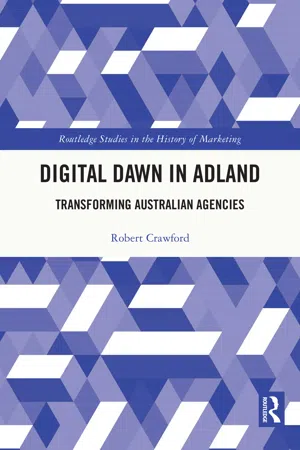1 The end of certainty
On 29 November 1990, Australia’s Treasurer, Paul Keating, formally announced that the national economy was in recession. It was grim news. Keating, however, saw things differently, stating: ‘The most important thing about that is that this is a recession that Australia had to have’.1 Having played an instrumental role in deregulating and liberalising Australia’s economy over the past seven years, Keating considered the recession to be an unfortunate development, albeit a necessary one that would ultimately benefit the nation. His choice of words, however, did not go down well. Over the following months, Australia’s GDP shrank, the Australian dollar fell to record lows, unemployment rapidly increased, interest rates skyrocketed, and a series of lending institutions collapsed. For those who had lost their jobs and their homes, the phrase ‘the recession we had to have’ rang hollow. In his survey of this ‘decisive transformation’ of Australia’s economy along with its impact on the nation, Paul Kelly concludes that a fundamental change had occurred—Australians in the early 1990s ‘had reached the end of certainty’.2 Frank Bongiorno offers a more circumspect interpretation, writing that Australia’s 1980s had been ‘a magic mirror in which the legacies of the past and the crises of the present were seen with greater clarity than before, and the possibilities of the future made faintly visible’.3 Similar claims could also be directed at Australia’s advertising industry.
From the 1950s through the 1980s, Australia’s advertising agencies enjoyed what Robert Crawford and Jackie Dickenson describe as a ‘golden age’.4 Their success was built on increasing advertising budgets, generous media commissions, and the insatiable appetite of the affluent consumer. By positioning themselves at the centre of this lucrative triangle, the advertising agencies succeeded in presenting themselves as an indispensable part of modern business. However, the advertising industry’s success was not entirely premised on firm foundations. Its growth was more dependent on economic stability rather than ingenuity on its own behalf. As long as consumption levels were growing, there was little need for marketers to question the agencies and their practices. The 1990s recession fundamentally disrupted this convenient arrangement in Australia and, indeed elsewhere—yet its significance has been ignored by studies of the industry’s development.5 With consumption levels falling and advertising expenditure shrinking, advertising and the advertising industry faced serious questions. While the advertising agencies took active steps to deal with the crisis, they assumed that stability would return, along with a resumption of the ‘golden age’ conditions. Such hopes, however, would ultimately be dashed. As Andrew Killey, the co-founder and creative director at KWP in Adelaide, recalls: ‘the Recession just stopped everything’.6 Although few in the advertising industry could see it at the time, the 1990s recession would prove to be the defining moment that the advertising industry ‘had to have’ if it was to break from the past. The economic crises of the late 1980s and, in particular, the early 1990s set in motion a series of developments that not only changed advertising practices and agency operations, but it also lay the groundwork for a new hierarchical order within the advertising industry itself.
A stumble before the fall
When Black Monday wiped 23 per cent off American stocks on 19 October 1987, the world held its breath. Any hopes that Australia might avoid a similar fate were quickly dashed. By the time the time the Australian stock market closed on Tuesday, it had suffered 25 per cent loss. Australian observers were alarmed, but cautioned against comparisons with 1929. Days later, Sydney Morning Herald’s economics commentator Ross Gittins described the situation ‘serious, but … not the end of the world’.7 While he felt it was still too early to comment on the crash’s impact on Australia’s economy, Gittins nevertheless warned that ‘psychological damage’ wrought by the crash could undermine ‘the confidence of consumers and investors’ and that a ‘severe dent to confidence will bring recession on earlier’.
As fear swept through the international business sector, companies considered ways of safeguarding their existence. Some three weeks after the collapse, the Business Council of Australia reported that ‘the risk of a slide into recession’ had prompted a third of the nation’s major companies to pay closer attention to discretionary costs, including overtime, staff recruitment, investment, and advertising expenditure.8 While the prospect of shrinking advertising budgets was a certainly worrying development for the advertising industry, its leaders expressed a more sanguine view when speaking publicly. Malcolm Spry, the chairman of the Mojo-MDA group, Australia’s only publicly owned agency, presented an upbeat analysis of the agency’s fortunes. In addition to assuring audiences that Mojo-MDA’s finances were in order and that its global expansion strategy was profitable, Spry declared that the agency’s key clients were ‘market leaders dealing in basic commodities which, on past experience, are more immune from the effects of a recession’.9 Similar sentiments were expressed by other leading figures. At the Outlook for the Media conference in New York, John Perriss, worldwide media director of Saatchi & Saatchi, noted that past economic ...
